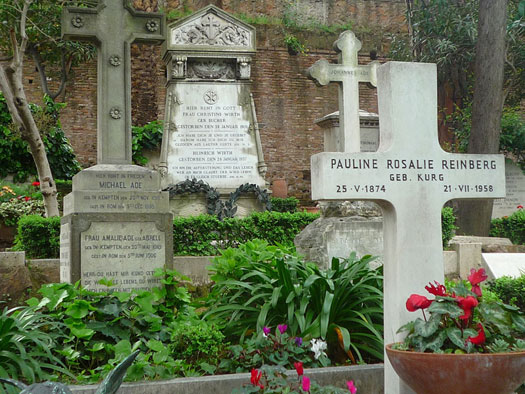
The Cimitero Acattolico in Rome
Predating Pere Lachaise and other great classic cemeteries, the Cimitero Acattolico in Rome is believed to have the largest concentration of well-known graves in the world, which sounds suspiciously like a typical Italian claim: hyperbolic and endearing but in all likelihood, debatable. Nevertheless, it sits across from the Pyramid of Cestius (dated between 18 and 12 B.C.) and is divided into an old and a newer area, its principal draw being the graves of Percy Bysshe Shelley and John Keats, the latter having come to Rome in the winter of 1820 hoping to recover from tuberculosis, where he succumbed to the disease only months later. Keats is buried next to his good friend Joseph Severn, a painter, who was apparently so poor at the time of his own death that a posse of friends paid for his internment. (An impressive crowd that included Gabriele Rossetti, all of whom are duly credited on the back of his tombstone.) Wedged between these lies a marker that could only belong to a child, and which turns out to be Severn’s son, who died accidentally in his crib as an infant.
Such woeful narratives are common in cemeteries, and the Acattolico is no exception. If Rome has rightfully earned its name as the eternal city, it is perhaps at least in part due to the dramatic stories on the sides of stone plinths such as these — tales expressing the infinity of grief, the interminability of mourning, a gloom so profound, it can only be reflected in a series of grey tablets, protruding from the earth with a kind of deep, solemn grace. That we visited on an overcast morning in early spring only added to the mystery: fragrant wisteria in bloom, trees just beginning to leaf out, a poignant backdrop to the inert stones and the stories they held. And here, you can’t help but be affected by the countless biographical fragments, stories that remind us of our own mortality (how could they not?), just as they gesture poetically to a time, long ago, when war and disease claimed young mothers and soldiers, grieving parents, even children in their cribs.
The famous are buried here, as well as the not-so-famous: what they mostly share in common is the fact that they were, for the most part, foreign-born. None were Catholic — there were Jews, Protestants and others — and no crosses were allowed on tombstones before about 1870. The graves themselves range from early neoclassical to full-tilt baroque, with no shortage of simple, minimalist, even neo-facist gravestones, barely more than geometric motifs in this otherwise densely plotted park. Some include typos — as in the case of the grave shared by two of the deceased children of the American sculptor William Story — which, I confess, seemed perfectly logical to me: after the loss of two children, how could you possibly remember how to spell February?

Predating Pere Lachaise and other great classic cemeteries, the Cimitero Acattolico in Rome is believed to have the largest concentration of well-known graves in the world, which sounds suspiciously like a typical Italian claim: hyperbolic and endearing but in all likelihood, debatable. Nevertheless, it sits across from the Pyramid of Cestius (dated between 18 and 12 B.C.) and is divided into an old and a newer area, its principal draw being the graves of Percy Bysshe Shelley and John Keats, the latter having come to Rome in the winter of 1820 hoping to recover from tuberculosis, where he succumbed to the disease only months later. Keats is buried next to his good friend Joseph Severn, a painter, who was apparently so poor at the time of his own death that a posse of friends paid for his internment. (An impressive crowd that included Gabriele Rossetti, all of whom are duly credited on the back of his tombstone.) Wedged between these lies a marker that could only belong to a child, and which turns out to be Severn’s son, who died accidentally in his crib as an infant.
Such woeful narratives are common in cemeteries, and the Acattolico is no exception. If Rome has rightfully earned its name as the eternal city, it is perhaps at least in part due to the dramatic stories on the sides of stone plinths such as these — tales expressing the infinity of grief, the interminability of mourning, a gloom so profound, it can only be reflected in a series of grey tablets, protruding from the earth with a kind of deep, solemn grace. That we visited on an overcast morning in early spring only added to the mystery: fragrant wisteria in bloom, trees just beginning to leaf out, a poignant backdrop to the inert stones and the stories they held. And here, you can’t help but be affected by the countless biographical fragments, stories that remind us of our own mortality (how could they not?), just as they gesture poetically to a time, long ago, when war and disease claimed young mothers and soldiers, grieving parents, even children in their cribs.
The famous are buried here, as well as the not-so-famous: what they mostly share in common is the fact that they were, for the most part, foreign-born. None were Catholic — there were Jews, Protestants and others — and no crosses were allowed on tombstones before about 1870. The graves themselves range from early neoclassical to full-tilt baroque, with no shortage of simple, minimalist, even neo-facist gravestones, barely more than geometric motifs in this otherwise densely plotted park. Some include typos — as in the case of the grave shared by two of the deceased children of the American sculptor William Story — which, I confess, seemed perfectly logical to me: after the loss of two children, how could you possibly remember how to spell February?

Tombstone of Joseph Story
When it came time to bury his beloved wife, Story spelled everything correctly, and placed a weeping angel on her grave. Breathtaking, it can be seen from nearly every corner of the otherwise monochromatic site — a smoothly polished white winged creature, bent over the grave in eternal grief.
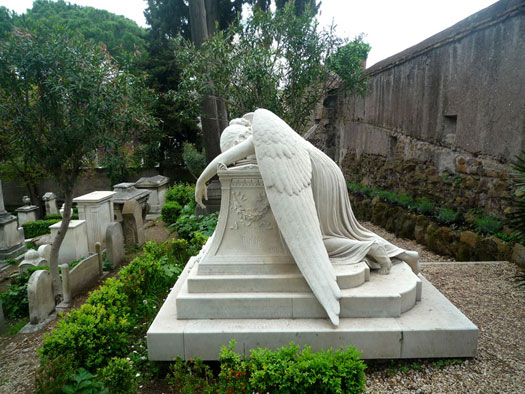
When it came time to bury his beloved wife, Story spelled everything correctly, and placed a weeping angel on her grave. Breathtaking, it can be seen from nearly every corner of the otherwise monochromatic site — a smoothly polished white winged creature, bent over the grave in eternal grief.

Tombstone of Joseph Story's wife
The social history here is evident in everything from the inscriptions to the names of the deceased — Elspeth Passarge, Horace Belshaw, and the inimitable (and scarcely pronouncable) Barronness Elsa Pfafferott. The dates, too, are telling, particularly when the life represented is, like Charles Dark (who “died for love”) such an abbreviated one.

The social history here is evident in everything from the inscriptions to the names of the deceased — Elspeth Passarge, Horace Belshaw, and the inimitable (and scarcely pronouncable) Barronness Elsa Pfafferott. The dates, too, are telling, particularly when the life represented is, like Charles Dark (who “died for love”) such an abbreviated one.

Tomb of Elsbeth Passarage
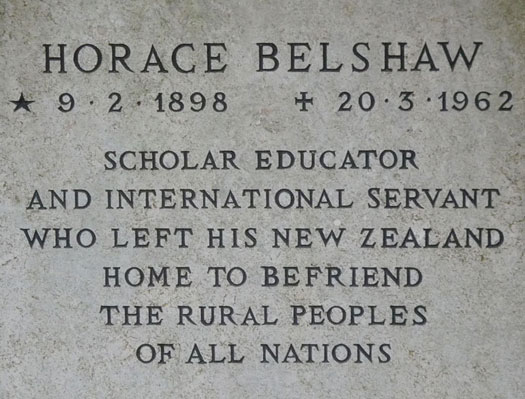

Tombstone of Horace Belshaw
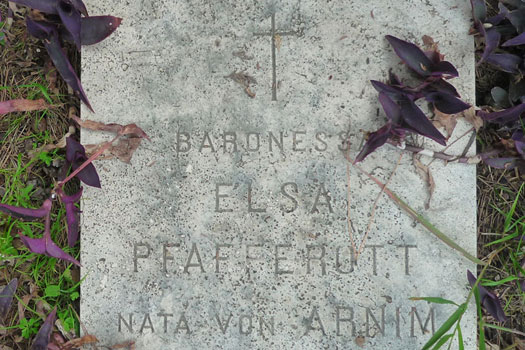

Tombstone of Elsa Pfafferott
“It might make one in love with death, to think that one should be buried in so sweet a place," wrote Percy Shelley, shortly before his own death. His first son, William, who died tragically at the age of three, probably of cholera, is buried here, as are the poet’s ashes.
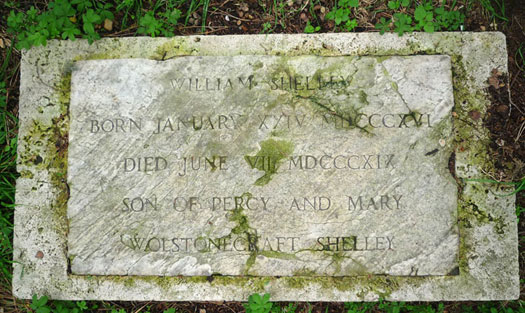
“It might make one in love with death, to think that one should be buried in so sweet a place," wrote Percy Shelley, shortly before his own death. His first son, William, who died tragically at the age of three, probably of cholera, is buried here, as are the poet’s ashes.

Tombstone of William Shelley
Death, of course, eventually awaits us all. And who among us would not want to be remembered for being “noble in dignity” as the sculptor John Gibson; or for her “cultivated taste and cheerful Christian spirit,” as Elizabeth Susan Percy; or as the young Charles Duncombe, “a most dutiful and affectionate son and a rare example of piety purity of morals and goodness of heart.”
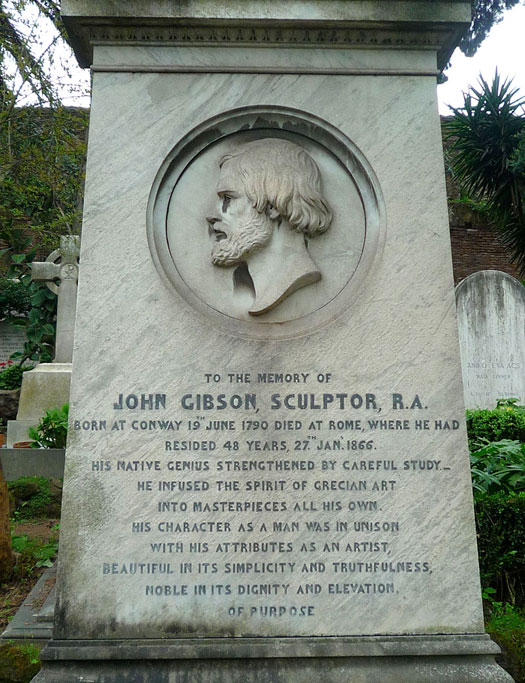
Death, of course, eventually awaits us all. And who among us would not want to be remembered for being “noble in dignity” as the sculptor John Gibson; or for her “cultivated taste and cheerful Christian spirit,” as Elizabeth Susan Percy; or as the young Charles Duncombe, “a most dutiful and affectionate son and a rare example of piety purity of morals and goodness of heart.”

Tombstone of John Gibson
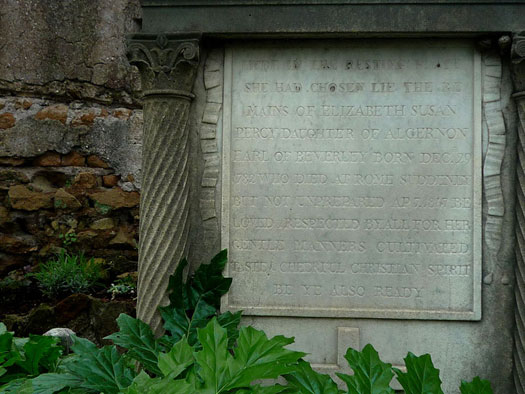

Tombstone of Elizabeth Percy
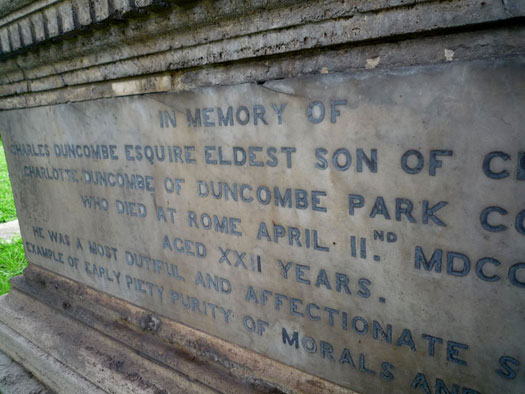

Tombstone of Charles Duncombe
One does not have to be a poet to write heartbreaking words on a piece of eternal stone. Or perhaps the opposite is true, that all such memorials are lyrical remembrances — that every poem, as T.S. Eliot once observed, is an epitaph.

One does not have to be a poet to write heartbreaking words on a piece of eternal stone. Or perhaps the opposite is true, that all such memorials are lyrical remembrances — that every poem, as T.S. Eliot once observed, is an epitaph.

Tombstone of Derrick Plant
